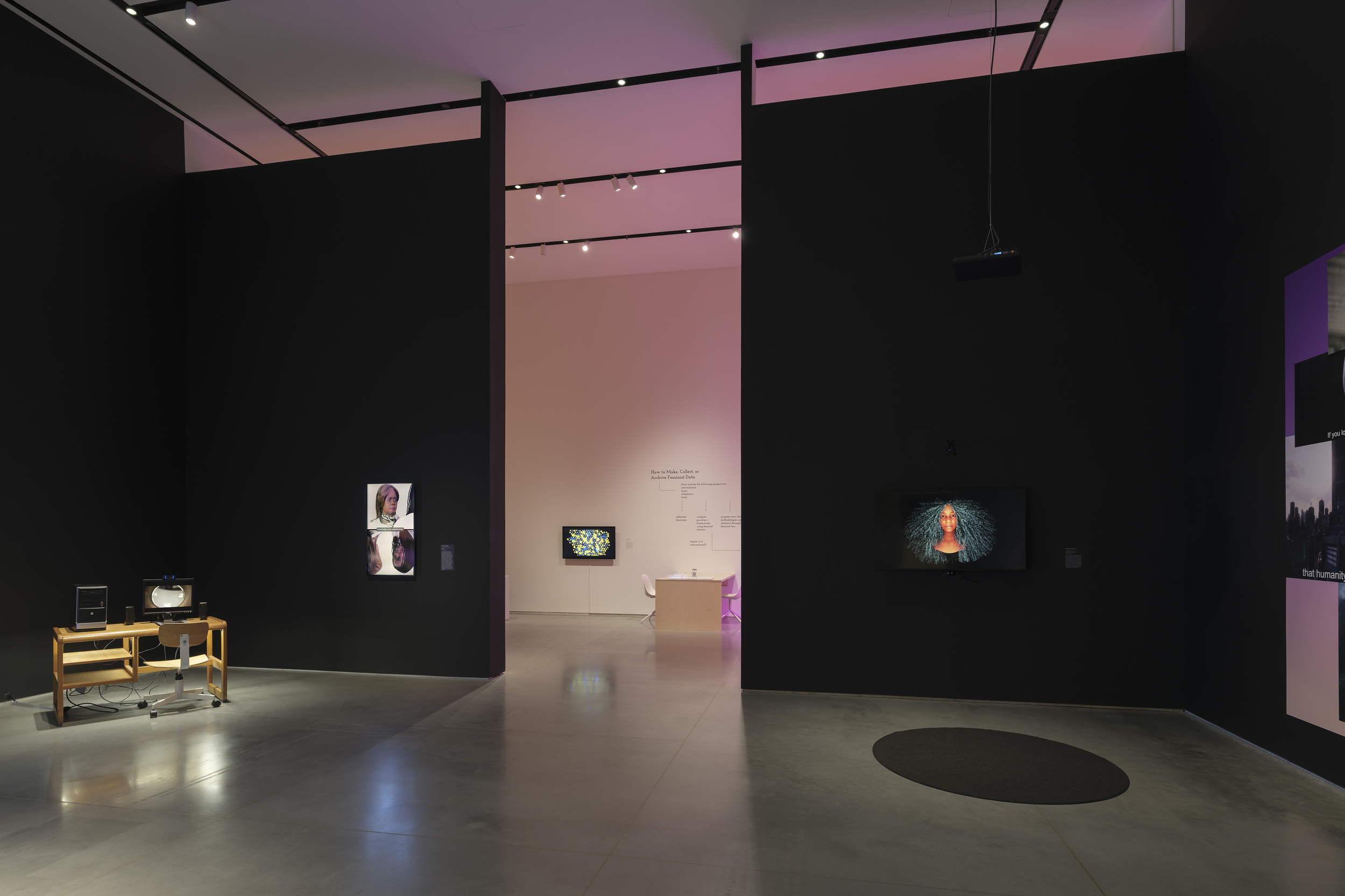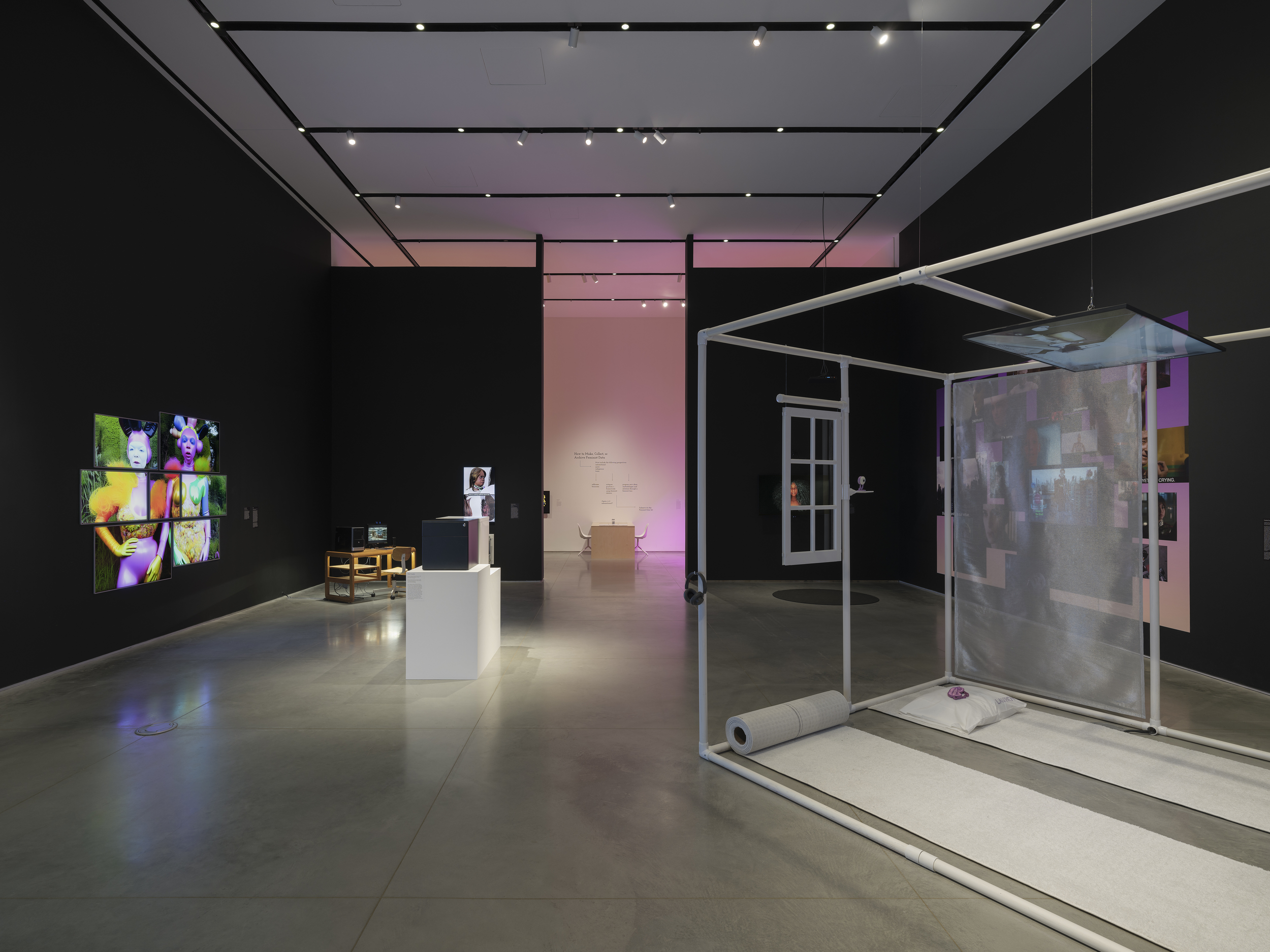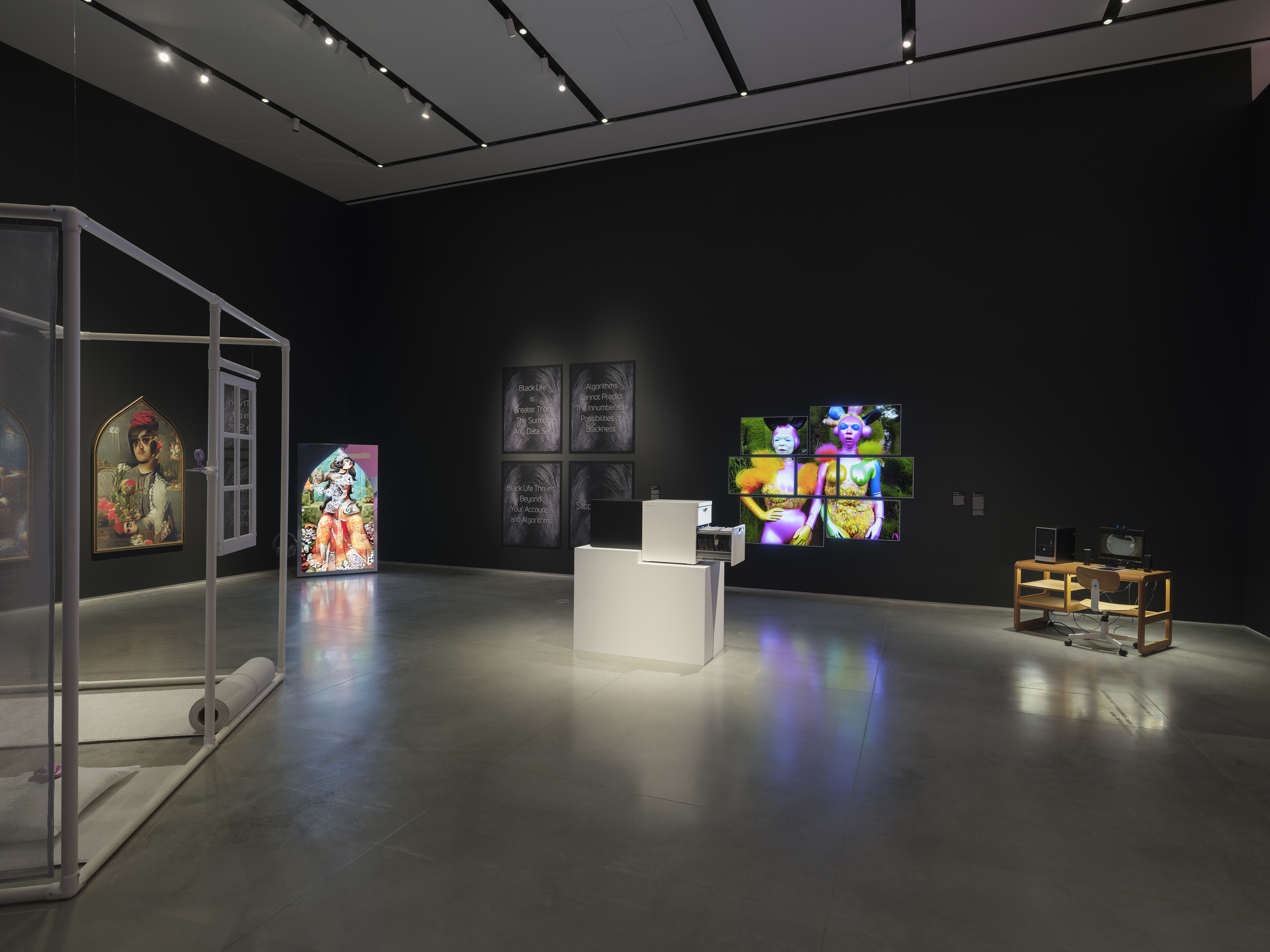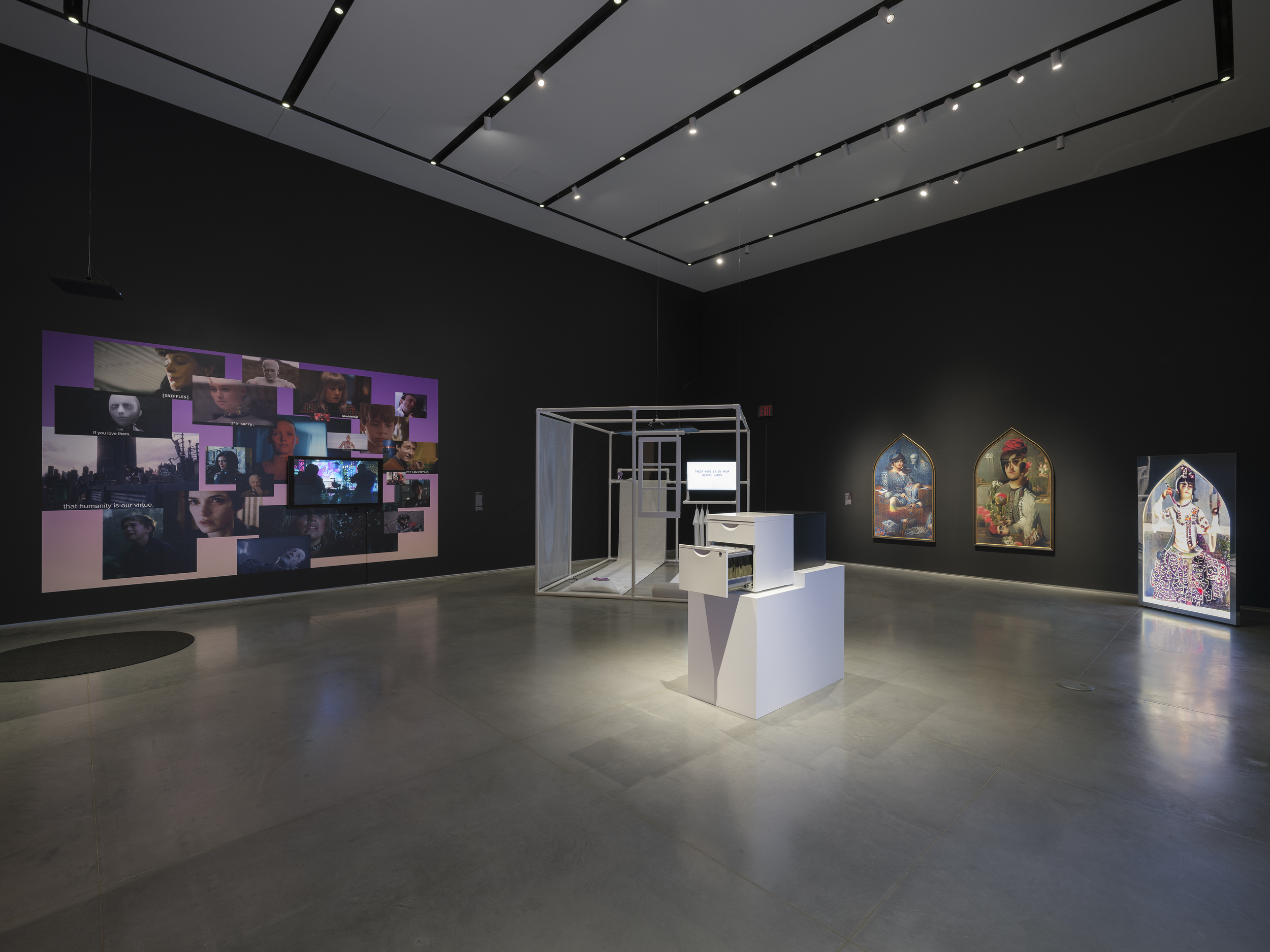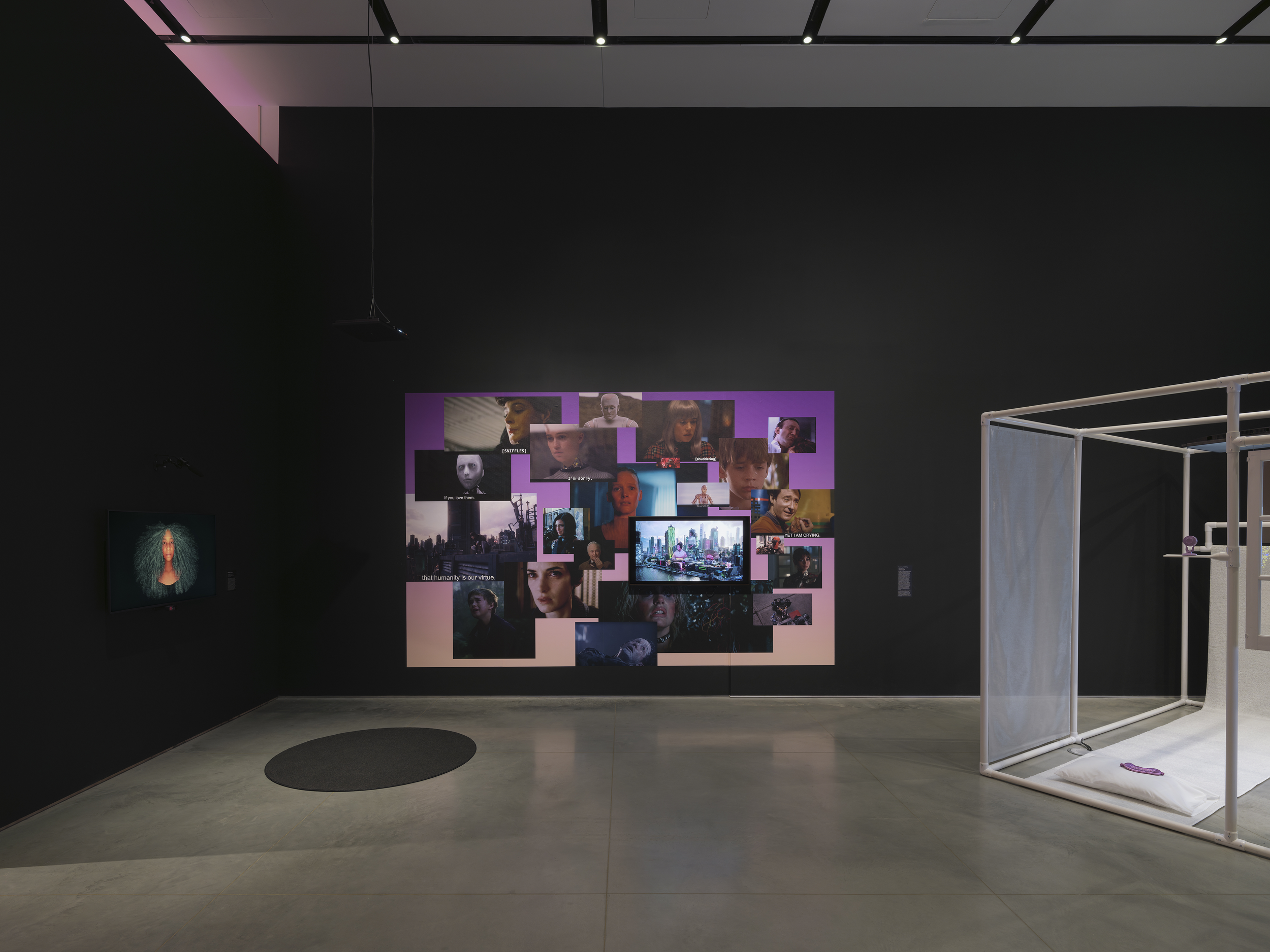
November 2023
What Models Make Worlds: Critical Imaginaries of AI
Andrew Demirjian, Dahlia Elsayed, Aroussiak Gabrelian, Lauren Lee McCarthy, Niama Safia Sandy, Astria Suparak
What Models Make Worlds: Critical Imaginaries of AI (installation view), Ford Foundation Gallery, September 7—December 9, 2023
Amanda Quinn Olivar delves into an important new exhibition about the future of AI at the Ford Foundation Gallery in New York.
What Models Make Worlds: Critical Imaginaries of AI is a group exhibition featuring artists working across artificial intelligence systems to envision more just futures. The exhibition invites visitors to reflect on how current and future technologies might be otherwise imagined. In this exclusive feature, the show’s curators and select artists talk about their work.
Mashinka Firunts Hakopian and Meldia Yesayan
Exhibition Curators
The show’s first iteration was held at Oxy Arts in 2021, titled Encoding Futures: Critical Imaginaries of AI. That first iteration pivoted around the question: what is the role of artists and cultural workers in rendering algorithmic operations visible? If algorithmic worldmaking unfolds in a “black box” and can be difficult to visualize, how do artists give visual form to that worldmaking?
Later, we were invited by the amazing Lisa Kim, Director of the Ford Foundation Gallery, to restage the show in 2023. By that point, there was already a robust public discourse around algorithmic harms, and we shifted the show’s framing slightly to the question: how do artists and cultural workers participate in modeling new forms of worldmaking through critical engagements with technology?
What Models Make Worlds: Critical Imaginaries of AI (installation view), Ford Foundation Gallery, September 7—December 9, 2023
Andrew Demirjian & Dahlia Elsayed
Artists
The Center for No Center presents a speculative “reading room for alternative intelligences, inspired by cosmological geometries for seeing with the heart.” Conjuring an alternate timeline beyond our present, the reading room situates itself in a space-time where the Library of Alexandria and the House of Wisdom remain extant. At the same time, the Enlightenment and European colonial projects failed to exist. The installation frames space-time as one marked by knowledge systems that radically differ from our own, refusing differentiation between science, math, art, literature, and spirituality. It’s populated by a library of texts on critical media studies, which visitors are encouraged to peruse.
Andrew Demirjian & Dahlia Elsayed, The Center for No Center, 2023, mixed media
Aroussiak Gabrelian
Artist
I was invited to integrate questions about ecology into the exhibition’s theme, which focused on the encoded biases of AI systems and how they magnify existing structural inequalities. I wanted to critique the sources of knowledge that have coded and shaped our (Western) perspective on the biophysical world and offer alternative knowledge systems that would instead foreground plant intelligence.
I wanted to raise the following questions: What can plant intelligence teach us about more interconnected and relational ways of being? Could we counter the reductiveness of Western science and its contribution to “plant blindness,” which is a form of cognitive bias that prevents us from seeing the agency of plants as intelligent, living, and sociable beings?
Seeding books related to Western philosophy, science, and systems of thinking derived from the European Enlightenment, with symbiotic species of plants, visitors are invited to feed and nourish the growing ecosystem on display. While Western anthropocentric perspectives treat nature-as-other to be extracted and exploited, “Botanic Attunement” invites interaction through the delivery of nutrient feed, offering visitors a means to participate in collective expressions of care shared within interdependent webs of life. The piece in the show is living and will continue to grow and shift throughout the exhibit.
Arousiak Gabrelian, Botanic Attunement, 2023, books on Western science seeded with species of Cucurbitaceae and Fabaceae, magnifying glasses, grow lights, nutrient feed, dimensions variable
Lauren Lee McCarthy
Artist
I become a human Alexa, a smart home intelligence for people in their homes. The performance lasts up to a week. It begins with the installation of a series of custom-designed networked smart devices (including cameras, microphones, switches, door locks, faucets, and other electronic devices). I then remotely watch over the person 24/7 and control all aspects of their home. I aim to be better than an AI because I can understand them as a person and anticipate their needs. The relationship that emerges falls in the ambiguous space between human-machine and human-human. LAUREN is a meditation on AI in private places, the tensions between intimacy versus privacy, convenience versus agency this presents, and the role of human labor in the future of automation.
Lauren Lee McCarthy, LAUREN, 2017, ongoing video, devices, furnishings, 100 x 109 x 147 inches
Niama Safia Sandy
Artist
These works represent the first iterations of my current visual work exploring a form I call The Groove. Through the use of multiple black pigments, these works reflect and represent the incalculable diversity and potential of Black people on the planet. The form is a stance against the accounting that whiteness and capitalism have long waged on humanity in general and on Black people in particular. The sweeping, bending gesture made with paint and pigment is one toward freedom, an overriding/overwriting of the arcane systems of value that have never served us. The text on the images is an effort to place the issues at hand in conversation with the algorithms at the center of predictive policing, the carceral state, and the general overextended hand of capitalism and how they all attempt to apprehend and extract Black people, their souls, their bodies and the wondrous gifts of creativity and ingenuity. The phrases are an assertion of our freedom now and in a future where we have dismantled these systems.
Niama Safia Sandy, The Groove, 2021, viny prints, 52 x 42 inches each
Astria Suparak
Artist
The installation White Robot Tears is an array of sympathetic white-coded robots and cyborgs in mainstream science-fiction cinema from Star Wars (1977) and Aliens (1986) to Ex Machina (2014) and Foundation (2021). These white AI agents are imbued with more humanity than the Asian figures used to punctuate the background of the futuristic worlds seen in Virtually Asian, my video embedded within the collage. This work is part of my larger series Asian futures, without Asians, which analyzes over half a century of American science fiction and its repeated techno-Orientalist representations of the future. Drawing from histories of art, architecture, design, fashion, film, food, and weaponry, these projects outline the limits and absurdities and the darker implications of the (well-resourced, heavily platformed) white imaginary.
Astria Suparak, Sympathetic White Robots (White Robot Tears version), 2021, vinyl print
What Models Make Worlds: Critical Imaginaries of AI
Ford Foundation Gallery
New York
September 7—December 9, 2023

